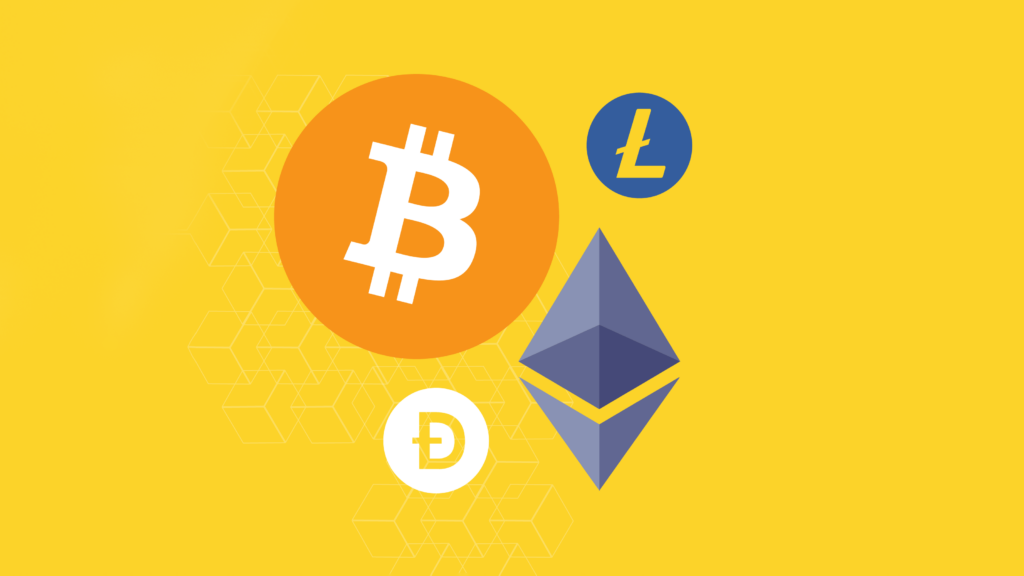
What Is Crypto Lending?
Crypto lending is the process of depositing cryptocurrency that is lent out to borrowers in return for regular interest payments. Payments are made in the form of the cryptocurrency that is deposited typically and compounded on a daily, weekly, or monthly basis.
There are two main types of crypto lending platforms: decentralized crypto lenders and centralized crypto lenders. Both offer access to high interest rates, sometimes up to 20% annual percentage yield (APY), and both typically require borrowers to deposit collateral to access a crypto loan.
Understanding Crypto Lending
Cryptocurrency lending platforms offer opportunities for investors to borrow against deposited crypto assets and the ability to lend out crypto to earn interest in the form of crypto rewards. Lending platforms became popular in 2020 and have since grown to billions in total value locked on various platforms.
Crypto lending has two components: deposits that earn interest and cryptocurrency loans. Deposit accounts function similarly to a bank account. Users deposit cryptocurrency, and the lending platform pays interest, up to 8% APY (depending on the platform and the cryptocurrency). The platform can use deposited funds to lend out to borrowers or for other investment purposes.
Crypto loans are typically offered as collateralized lending products, requiring users to deposit from a minimum of 100% (and up to 150%, depending on the lender) in crypto collateral to borrow cash or cryptocurrency.
Like traditional loans, the interest rates vary by platform and require monthly payments. Unlike traditional loans, the loan terms for cryptocurrency can be as short as seven days and may go up to 180 days and charge an hourly interest rate, like Binance. Then there are other lenders who offer an indefinite line of credit instead, like Nexo, which offers 0% APR.

Types of Crypto Loans
There are several types of cryptocurrency loans available:
Collateralized loans
Collateralized loans are the most popular and require deposited cryptocurrency that is used as collateral for the loan. Most platforms require overcollateralization, which means that borrowers can access only up to a certain percentage of the deposited collateral (typically below a 90% loan-to-value). The lower the loan-to-value (LTV), the lower the interest rate, as well as a lower risk of being margin called.
Crypto line of credit
Instead of offering a traditional loan with a predetermined term length, some platforms offer a cryptocurrency line of credit. This is a type of collateralized loan that allows users to borrow up to a certain percentage of deposited collateral, but there are no set repayment terms, and users are only charged interest on funds withdrawn.
Uncollateralized loans
Uncollateralized loans are not as popular, but they function similarly to personal loans. Borrowers must fill out a loan application, pass identity verification, and complete a creditworthiness review to be approved. These loans have a higher risk of loss for lenders because there is no collateral to liquidate in the event of a loan default.
Flash loans
Flash loans are typically available on crypto exchanges and are instant loans that are borrowed and repaid in the same transaction. These are very high-risk loans that are typically used to take advantage of market arbitrage opportunities, such as buying cryptocurrency for a lower price in one market and instantly selling for a higher price in another, all within the same transaction.

Risks of Crypto Lending
Cryptocurrency lending is inherently risky for both borrowers and lenders because the loans and deposited funds are beholden to the ever-volatile crypto market. As the recent Celsius debacle has unfolded, billions of dollars in deposits were frozen overnight, leaving crypto enthusiasts less than enthused.
Here are a few of the risks of crypto lending:
Margin calls
When users pledge collateral and borrow against it, a drop in the deposited collateral’s value can trigger a margin call. This happens when the LTV of a crypto loan drops below the agreed-upon rate. When this happens, borrowers either need to deposit more collateral to get the LTV back down or risk liquidation.
Illiquidity
When crypto assets are deposited onto crypto lending platforms, they typically become illiquid and cannot be accessed quickly. Though some crypto lending platforms allow lenders to withdraw deposited funds fairly quickly, others may require a long waiting period to access funds.
Unregulated
Crypto lending platforms are not regulated and do not offer the same protections banks do. For example, U.S. bank deposits are Federal Deposit Insurance Corporation (FDIC) insured for up to $250,000 per depositor, and in the event the bank becomes insolvent, user funds up to that limit are protected. For crypto lending platforms that experience solvency issues, there are no protections for users, and funds may be lost.
High interest rates
Though some crypto loans offer low rates, most crypto loans charge over 5% APR, with some charging up to 13% APR (or more).
How to Get a Crypto Loan
To apply for a crypto loan, users will need to sign up for a centralized lending platform (such as BlockFi) or connect a digital wallet to a decentralized lending platform (such as Aave). Next, users will select the collateral to be deposited, as well as the type of loan and amount desired to borrow. The amount available will vary by collateral and amount deposited.
To complete the transaction, users will need to deposit the collateral into the platform’s digital wallet, and the borrowed funds will instantly transfer to the user’s account or digital wallet.
Most loans offer instant approval, and loan terms are locked in via a smart contract.

How to Lend Crypto
To become a crypto lender, users will need to sign up for a lending platform, select a supported cryptocurrency to deposit, and send funds to the platform. On a centralized crypto lending platform, interest may be paid in kind or with the native platform token. On a decentralized exchange, interest is paid out in kind, but there may also be bonus payments.
Is Crypto Lending Safe?
Cryptocurrency lending is a double-edged sword. On one hand, most loans are collateralized, and even in the event of a default, lenders can recoup their losses via liquidation. They also offer much higher interest rates on deposits than traditional bank accounts. On the other hand, lending platforms have the sovereignty to simply lock users’ funds in place, as is the case with Celsius, and there are no legal protections in place for investors. There are also risks to borrowers because collateral can drop in value and be liquidated, selling their investment at a much lower price. Lending platforms are being targeted by regulators around the globe, with regulations forming around deposit accounts and even leading the Securities and Exchange Commission (SEC) to fine BlockFi $100 million for violating securities laws. Overall, crypto lending can be safe for scrutinous users, but it poses major risks to borrowers and investors alike.
How Do You Make Money Lending Crypto?
When depositing crypto to a lending platform, users can earn a generous amount of interest on those deposits, often more than traditional banks can. The deposited funds are lent out to borrowers that pay for a portion of that interest, and funds can also be alternatively invested to earn additional yield.
What Is Decentralized Finance (DeFi) Lending?
Decentralized finance (DeFi) lending is a platform that is not centrally governed but rather offers lending and borrowing services that are managed by smart contracts. DeFi loans are instant, and decentralized apps (dApps) allow users to connect a digital wallet, deposit collateral, and instantly access funds. DeFi lending allows users to deposit crypto via a digital wallet and start earning interest right away, typically compounding on a minute-by-minute basis. Most DeFi lending platforms require overcollateralization of loans, depositing 110% (or more) of the loan amount. The difference between DeFi and centralized platforms is that the deposited collateral also earns interest, even when attached to a loan.




























